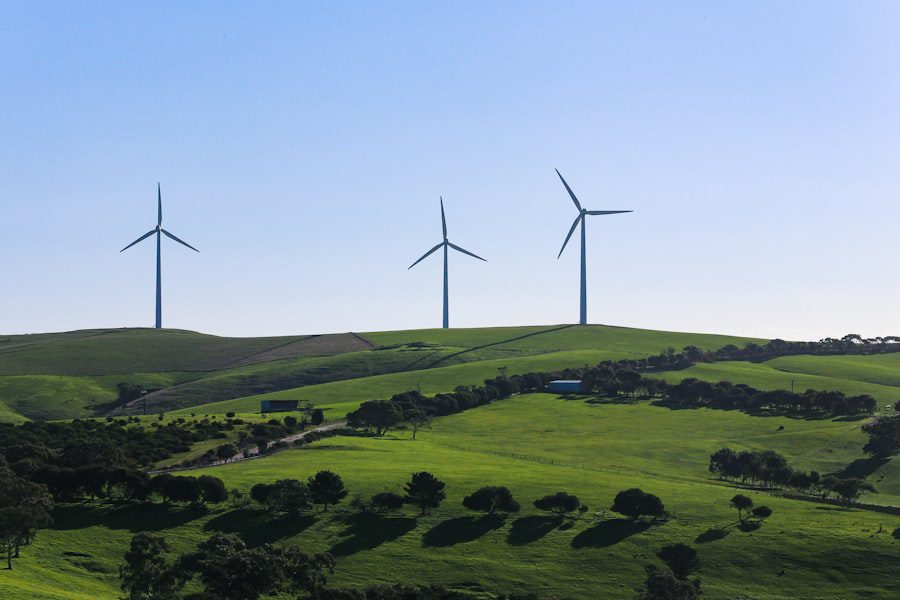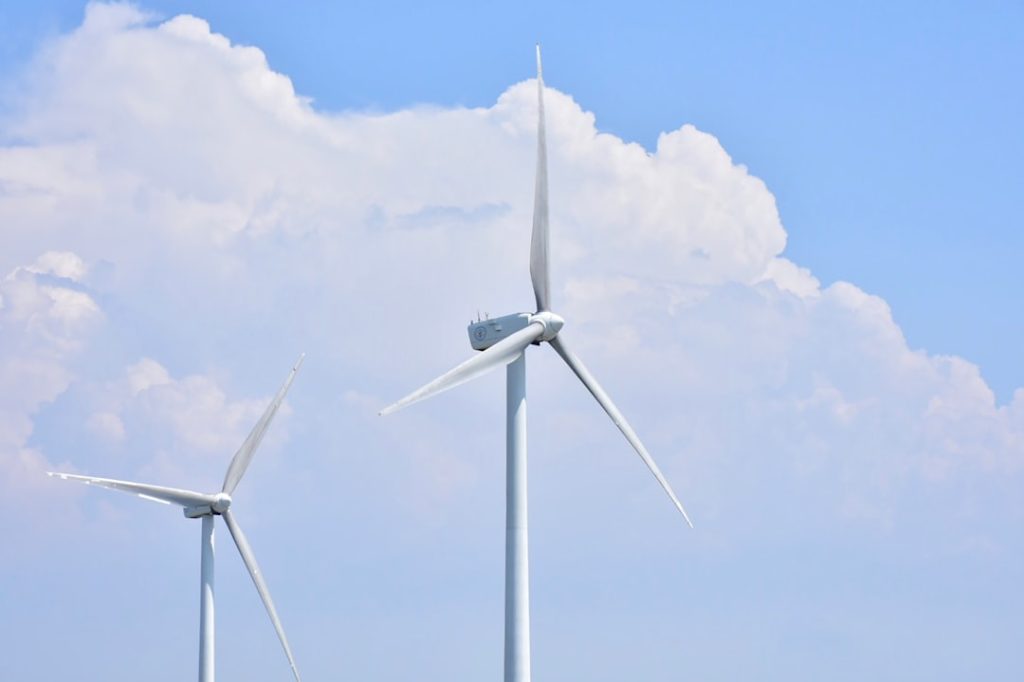Afghanistan, a landlocked country in Central Asia, faces significant challenges in meeting its energy needs. The country relies heavily on imported fossil fuels, which not only puts a strain on its economy but also contributes to environmental degradation. In addition, access to electricity is limited, particularly in rural areas where the majority of the population resides. To address these issues and promote sustainable development, Afghanistan needs to explore and invest in green energy solutions.
Green energy solutions, such as renewable energy sources like solar, wind, hydroelectric power, biomass, and geothermal energy, offer a viable alternative to fossil fuels. These sources are abundant in Afghanistan and can provide a sustainable and reliable source of energy. By harnessing these resources, Afghanistan can reduce its dependence on imported fossil fuels, improve access to electricity, create job opportunities, and mitigate the adverse effects of climate change.
The Current Energy Situation in Afghanistan: Challenges and Opportunities
Afghanistan’s current energy situation is characterized by a heavy reliance on imported fossil fuels. The country imports nearly all of its petroleum products and natural gas, which puts a strain on its economy due to high fuel prices and transportation costs. This dependence on imports also makes Afghanistan vulnerable to fluctuations in global oil prices.
Furthermore, access to electricity is limited in Afghanistan, particularly in rural areas where only about 30% of the population has access to electricity. This lack of access hinders economic development and limits opportunities for education and healthcare. It also forces many households to rely on traditional biomass fuels like wood and dung for cooking and heating, which contribute to indoor air pollution and deforestation.
However, despite these challenges, Afghanistan has significant opportunities for renewable energy development. The country has abundant solar resources, with an average of 300 sunny days per year. It also has strong wind resources in certain regions and abundant hydropower potential. By tapping into these resources, Afghanistan can diversify its energy mix, improve energy security, and promote sustainable development.
Solar Energy: A Promising Solution for Afghanistan’s Energy Needs
Solar energy is a promising solution for Afghanistan’s energy needs due to the country’s abundant solar resources. With an average of 300 sunny days per year, Afghanistan has the potential to generate a significant amount of electricity from solar power. Solar energy can be harnessed through photovoltaic (PV) panels, which convert sunlight into electricity, or through solar thermal systems, which use sunlight to heat water or air.
There have already been successful solar projects in Afghanistan that demonstrate the potential of this renewable energy source. For example, the Kandahar Solar Power Plant, which was completed in 2019, has a capacity of 10 megawatts (MW) and provides electricity to over 35,000 households in the region. Another example is the Solar Village Project in Bamyan province, which aims to provide electricity to remote villages using off-grid solar systems.
To further develop solar energy in Afghanistan, there is a need for government support and private investment. The government can provide incentives and policies that promote solar energy development, such as feed-in tariffs and tax incentives. Private investors can play a crucial role in financing and implementing solar projects, particularly in rural areas where access to electricity is limited.
Wind Energy: Harnessing the Power of the Afghan Wind
| Wind Energy Metrics | Values |
|---|---|
| Number of Wind Turbines Installed | 35 |
| Total Capacity of Wind Turbines | 75 MW |
| Annual Energy Production | 200 GWh |
| Reduction in CO2 Emissions | 150,000 tons per year |
| Number of Households Powered | 100,000 |
| Investment in Wind Energy | 200 million |
Afghanistan also has strong wind resources in certain regions, particularly in the northern and western parts of the country. These regions experience consistent wind speeds that make them suitable for wind energy development. Wind energy can be harnessed through wind turbines, which convert the kinetic energy of the wind into electricity.
There have been successful wind projects in Afghanistan that demonstrate the potential of this renewable energy source. For example, the Zarghun Shahr Wind Farm in Herat province has a capacity of 25 MW and provides electricity to over 18,000 households. Another example is the Badghis Wind Farm, which has a capacity of 15 MW and provides electricity to over 10,000 households.
However, there are challenges and opportunities for wind energy development in Afghanistan. One challenge is the lack of infrastructure and transmission lines in remote areas where wind resources are abundant. Another challenge is the intermittent nature of wind energy, which requires energy storage solutions to ensure a reliable and continuous power supply. Despite these challenges, wind energy has the potential to contribute significantly to Afghanistan’s energy mix and promote sustainable development.
Hydroelectric Power: Tapping into Afghanistan’s Hydropower Potential
Afghanistan has abundant hydropower resources, with an estimated potential of over 23,000 MW. The country is blessed with numerous rivers and streams that can be harnessed to generate electricity. Hydropower works by using the force of flowing or falling water to turn turbines, which then generate electricity.
There have been successful hydropower projects in Afghanistan that demonstrate the potential of this renewable energy source. For example, the Naghlu Dam on the Kabul River has a capacity of 100 MW and provides electricity to Kabul and surrounding areas. Another example is the Salma Dam in Herat province, which has a capacity of 42 MW and provides irrigation water and electricity to the region.
However, there are challenges and opportunities for hydropower development in Afghanistan. One challenge is the lack of infrastructure and transmission lines in remote areas where hydropower resources are abundant. Another challenge is the potential environmental impact of large-scale hydropower projects, such as displacement of communities and disruption of ecosystems. Despite these challenges, hydropower has the potential to contribute significantly to Afghanistan’s energy mix and promote sustainable development.
Biomass Energy: Using Waste for Sustainable Energy Production

Biomass energy is another potential solution for Afghanistan’s energy needs, particularly in rural areas where access to electricity is limited. Biomass refers to organic materials, such as agricultural residues, animal manure, and wood waste, that can be used as a fuel source. Biomass can be burned directly to produce heat or converted into biogas or biofuels.
Afghanistan has significant potential for biomass energy production due to its agricultural sector and abundant biomass resources. For example, agricultural residues like wheat straw and rice husk can be used as a fuel source for cooking and heating. Animal manure can be used to produce biogas, which can be used for cooking, heating, and electricity generation.
There have been successful biomass projects in Afghanistan that demonstrate the potential of this renewable energy source. For example, the Afghan Biomass Energy Program aims to promote the use of biomass for cooking and heating in rural areas. The program provides training and support to local communities in the construction and operation of biomass energy systems.
However, there are challenges and opportunities for further biomass development in Afghanistan. One challenge is the lack of awareness and knowledge about biomass energy among local communities. Another challenge is the need for appropriate technologies and equipment for biomass conversion. Despite these challenges, biomass energy has the potential to contribute significantly to Afghanistan’s energy mix and promote sustainable development.
Geothermal Energy: Exploring Afghanistan’s Geothermal Resources
Geothermal energy is a relatively untapped renewable energy source in Afghanistan but has significant potential for development. Geothermal energy is derived from the heat stored within the Earth’s crust, which can be harnessed to generate electricity or provide direct heating and cooling.
Afghanistan has potential geothermal resources in certain regions, particularly in the northern part of the country. These regions have hot springs and geothermal reservoirs that can be tapped into for energy production. Geothermal energy can provide a reliable and continuous source of electricity, as it is not affected by weather conditions like solar and wind energy.
Although there are currently no geothermal projects in Afghanistan, there are examples of successful geothermal projects in other countries that demonstrate the potential of this renewable energy source. For example, Iceland is known for its extensive use of geothermal energy, which provides over 80% of the country’s heating needs and a significant portion of its electricity.
However, there are challenges and opportunities for geothermal energy development in Afghanistan. One challenge is the high upfront costs and technical expertise required for geothermal exploration and development. Another challenge is the potential environmental impact of geothermal projects, such as the release of greenhouse gases and the depletion of underground water resources. Despite these challenges, geothermal energy has the potential to contribute significantly to Afghanistan’s energy mix and promote sustainable development.
Energy Storage: Overcoming the Challenge of Intermittent Renewable Energy
One of the challenges of renewable energy sources like solar and wind is their intermittent nature. The availability of solar and wind resources fluctuates throughout the day and year, which can lead to variations in electricity generation. To overcome this challenge and ensure a reliable and continuous power supply, energy storage solutions are needed.
Energy storage systems store excess electricity generated from renewable sources during periods of low demand or high generation and release it when demand is high or generation is low. This helps to balance supply and demand, stabilize the grid, and ensure a reliable power supply.
There are already examples of energy storage solutions in Afghanistan and other countries that demonstrate their effectiveness. For example, battery storage systems can be used to store excess solar or wind energy for later use. Pumped hydro storage systems can store excess electricity by pumping water uphill during periods of low demand and release it by flowing downhill through turbines during periods of high demand.
However, there are challenges and opportunities for further energy storage development. One challenge is the high upfront costs of energy storage systems, which can be a barrier to their widespread adoption. Another challenge is the need for appropriate technologies and infrastructure for energy storage. Despite these challenges, energy storage has the potential to overcome the intermittent nature of renewable energy sources and promote sustainable development.
The Economic and Social Benefits of Green Energy Solutions in Afghanistan
Investing in green energy solutions in Afghanistan can bring about significant economic and social benefits. One of the key benefits is job creation and economic development opportunities. The development and operation of renewable energy projects require a skilled workforce, which can create employment opportunities and stimulate economic growth. Moreover, investing in renewable energy can attract foreign direct investment and promote local industries, such as manufacturing of solar panels or wind turbines.
Another benefit is improved access to electricity, particularly in rural areas where access is limited. Renewable energy sources like solar, wind, and hydropower can provide off-grid or mini-grid solutions that can reach remote communities. This can improve living conditions, promote education and healthcare, and enhance economic activities in these areas.
Furthermore, investing in green energy solutions can reduce Afghanistan’s dependence on imported fossil fuels. This can enhance energy security, reduce vulnerability to fluctuations in global oil prices, and mitigate the adverse effects of climate change. By transitioning to a sustainable and renewable energy future, Afghanistan can contribute to global efforts to reduce greenhouse gas emissions and combat climate change.
The Path to a Sustainable and Renewable Future for Afghanistan
In conclusion, Afghanistan faces significant challenges in meeting its energy needs but also has significant opportunities for green energy solutions. Solar energy, wind energy, hydropower, biomass energy, geothermal energy, and energy storage all offer viable alternatives to fossil fuels and can contribute to sustainable development.
To realize the potential of these green energy solutions, there is a need for government support and private investment. The government can provide incentives and policies that promote renewable energy development, such as feed-in tariffs and tax incentives. Private investors can play a crucial role in financing and implementing renewable energy projects, particularly in rural areas where access to electricity is limited.
By investing in green energy solutions, Afghanistan can create job opportunities, improve access to electricity, reduce dependence on imported fossil fuels, and mitigate the adverse effects of climate change. It is crucial for the government, private sector, and international community to work together to pave the way for a sustainable and renewable future for Afghanistan.



